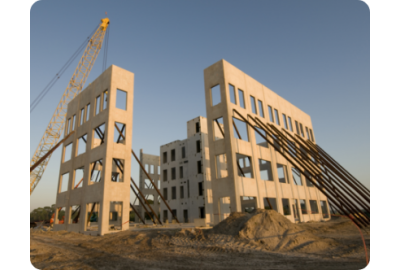Plastics have transformed the construction industry with their unique properties and sustainability. They are now often the material of choice over metal, glass and wood. This trend will only continue to grow. Valued at $130.2 billion in 2021, the global market for plastic building and construction materials is expected to reach $239.3 billion by 2023.
This guide will explore the advantages of plastic as a building material, focusing on its:
Whether you're a contractor, architect or engineer, this comprehensive overview will showcase the endless benefits and uses of plastic in construction.
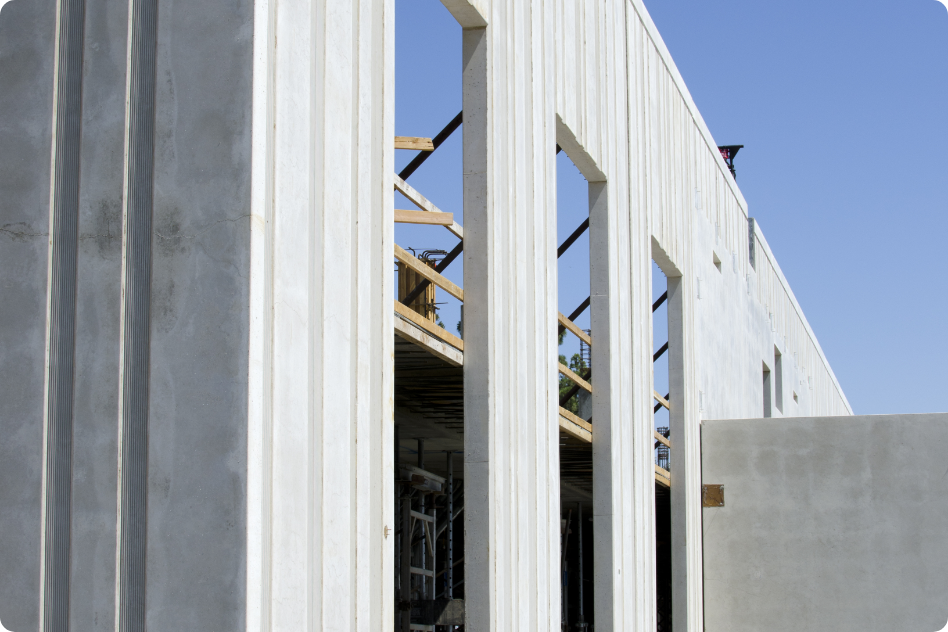
Understanding the Basics: The Types of Plastic Used in Construction
When you hear the word "plastic," it's easy to think it's all one and the same, but that couldn't be further from the truth. The construction industry utilizes a variety of plastic types, each bringing its own unique properties and advantages to the table. Here's a rundown of the plastic used in construction and building applications:
- Corrugated or fluted polypropylene — ideal for soil retention and temporary flooring
- HDPE — perfect for reveal strips for tilt-up panels when pouring concrete structures
- Polycarbonate and Lexan — often used for skylights and safety glasses
- Acrylic — frequently chosen for light fixtures or decorative elements
- Polyvinyl Chloride (PVC) — regularly selected for a wide range of applications; foam PVC sheets are used for displays and kiosks
- Polystyrene — incorporated into insulation boards and wall panels
- Polyurethane — used in everything from insulation panels to flooring and roofing materials
The different types of plastic used in construction serve different purposes, each with its own set of benefits. Understanding these basics showcases the versatility and advantages of using plastic as a construction material.
Using Plastic As a Building Material: 8 Advantages
The use of plastic in construction is not just a trend but an integral part of the modern building process. Let's explore the main advantages of plastic as a building material.
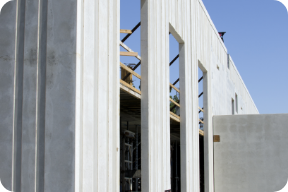
1. Light Weight
Plastic materials are significantly lighter than traditional building materials like metal, glass or wood, leading to easier handling and reduced transportation costs. This not only helps save money but also decreases the carbon footprint associated with transporting these materials. Its lightweight nature figures into several of the other advantages of using plastic in construction.
2. Durability
The plastics used in construction boast exceptional durability, unparalleled by many traditional construction materials. Their impressive resistance to environmental factors, including adverse weather conditions, rot and corrosion, enhances the lifespan of structures, minimizing the need for frequent maintenance or replacements.
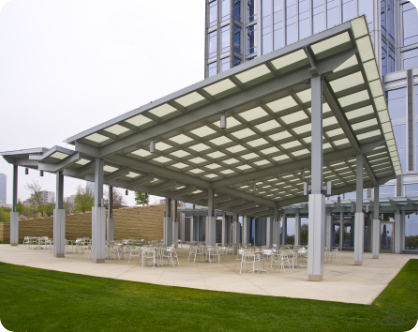
3. Flexibility
The architectural possibilities that plastics provide are substantial. Owing to their inherent malleability, plastics can be manipulated and fabricated to meet virtually any design requirement. This flexibility allows architects and builders to realize innovative and intricate design concepts, expanding the use of plastic in construction and building.
4. Cost Effectiveness
Financial factors significantly influence the selection of construction materials. Plastics excel in this regard due to their relative affordability and durability, equating to long-term savings. Because of their light weight, plastics also are less expensive to transport. This cost effectiveness has substantial implications for budget management within any construction project, making the use of plastic in construction a logical choice.

5. Energy Efficiency
Chief among the advantages of using plastic in construction is plastic's significant role in energy conservation. Insulation composed of plastic can markedly reduce heat loss, maintaining a building's internal temperature and reducing the reliance on energy-consuming heating and cooling systems. Consequently, plastic contributes to a more sustainable and energy-efficient construction industry.
6. Ease of Installation
Given its lightweight nature and versatility, plastic facilitates a streamlined installation process. Its ease of handling lowers labor intensity and installation time, reducing labor costs and decreasing workplace accidents.
7. Color Capabilities
Chief among the advantages of using plastic in construction is plastic's significant role in energy conservation. Insulation composed of plastic can markedly reduce heat loss, maintaining a building's internal temperature and reducing the reliance on energy-consuming heating and cooling systems. Consequently, plastic contributes to a more sustainable and energy-efficient construction industry.
8. Recyclability
The recyclability of plastics is a crucial benefit, especially given the growing emphasis on sustainable construction practices. Many types of plastic used in construction can be repurposed at the end of their life cycle. This contributes to waste reduction and the promotion of a circular economy, which reuses resources rather than discarding them.
The Uses of Plastic in Construction
Far from being a one-trick pony, plastic finds itself a place in a vast array of applications in construction. Its unique properties make it adaptable to different ends, proving its worth time and again. Let's look at the primary uses of plastic in construction.
Pre-construction Applications: Plastic Paving the Way
A construction project's success isn't solely about what occurs during the building process; it begins right from the preparatory stages. Plastic, owing to its versatile characteristics, is an excellent pre-construction material that aids in setting the stage for a smooth construction journey. Uses include temporary flooring and windows and soil retention barriers. Providing sturdy, flexible, and cost-effective solutions, the use of plastic in construction applications ensures that a project starts on solid ground.

Windows and Doors: PVC Frames and Advantages
The use of plastic in construction has made significant inroads in the fabrication of windows and doors. PVC frames, in particular, offer excellent thermal and acoustic insulation, are resistant to weathering and require minimal maintenance. They are also versatile, with a wide range of designs and finishes available to fit any architectural style.
Illuminating the Industry: Plastic in Glazing Applications
The role of plastic in glazing applications represents another advantage of plastic as a building material. Plastics such as polycarbonate and acrylic have become popular for glazing due to their unique properties. Polycarbonate is particularly appreciated for its high impact resistance, which is many times greater than glass. This makes it an excellent choice for applications where safety is a concern, such as in skylights, industrial windows or areas prone to hail or vandalism. Acrylic, often known by its brand name Plexiglas, is another plastic commonly used for glazing. It provides excellent clarity, allowing nearly as much light transmission as glass, but at roughly half the weight.
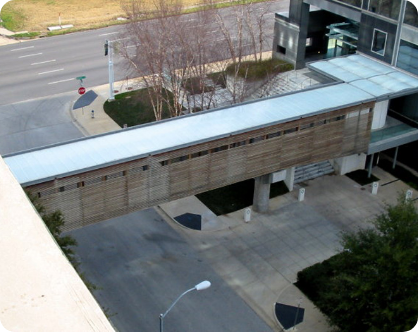
Roofing: Synthetic Roofing Systems
The use of plastic in construction is also evident in roofing systems. Our multiwall polycarbonate sheets offer durability, lightness and water resistance. They're designed with a UV protective layer for a longer life cycle outdoors and deliver excellent thermal insulation.
Interior Finishing: Wall Coverings, Flooring, and Decorative Elements
Regarding interior design and finishing, plastic is a material of choice for wall coverings, flooring and decorative elements. It's versatile and easy to clean and can be produced in an array of styles and finishes. Plastic laminate flooring, for instance, can replicate the look of wood or stone at a fraction of the cost and maintenance.
Exterior Applications: Fencing, Decking, Siding
Plastic is increasingly chosen for exterior applications due to its weather resistance and aesthetic versatility. Plastic decking can rival the appearance of wood, while plastic fences and siding offer a range of design options with the added benefit of being low-maintenance and long-lasting.
The Future of Plastic Used in Construction
Looking ahead, it becomes clear that the construction industry and plastics are firmly intertwined. Two key factors are set to shape the future of plastic used in construction — the rise of sustainable building and the continuous innovation in plastic materials.
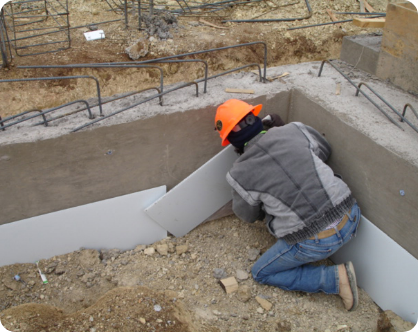
Sustainable Construction and Recyclable Plastics
The importance of sustainability in construction cannot be overstated. As the industry looks to decrease its environmental impact, the recyclability of plastics is coming into sharper focus. A growing number of plastics used in construction can now be recycled at the end of their lifecycle, reducing waste and contributing to a circular economy.
Recyclable plastics not only help in minimizing the industry's carbon footprint but also offer economic advantages. Recycled plastics can be repurposed for a wide range of applications, presenting cost-effective alternatives to virgin materials.
Innovations in Plastic Materials
The sphere of plastic material innovations continues to expand, with new advancements playing a pivotal role in creating more energy-efficient buildings and increasing the use of plastic in construction. For example, there's an ongoing development in plastic insulation materials, which are becoming more effective in retaining heat and reducing energy loss.
In addition, novel plastic composites are being created, which combine plastic with other materials to enhance its properties. These composites can offer improved strength, better thermal performance and greater longevity, among other benefits.
Frequently Asked Questions About Plastic As a Building Material
As the supplier of choice for a broad array of plastic sheets, Regal Plastics has the information about plastic as a building material that you want. Read the questions below to learn more, and be sure to contact us for additional details.
What Is Acrylic's Impact Resistance Compared to Glass?
What Is the Impact Resistance of Polycarbonate?
Is There a Plastic That's Well-Suited for Roofing Applications?
Turn to Regal Plastics to Expand Your Use of Plastic in Construction
Now that we've discussed the advantages of plastic as a building material, you're ready for the next step. It's time to put this knowledge into action and experience firsthand the versatility and advantages of using plastic in construction. Regal Plastics, a leading distributor of plastic materials, is here to meet your construction needs. We offer an extensive lineup of top-quality plastic sheets tailored to your specifications. Our team is committed to providing unparalleled service. We're ready to work alongside you, offering guidance to ensure you select the best materials for your project and helping you optimize your use of plastic in construction. Contact us today to put our expertise to work for you.







